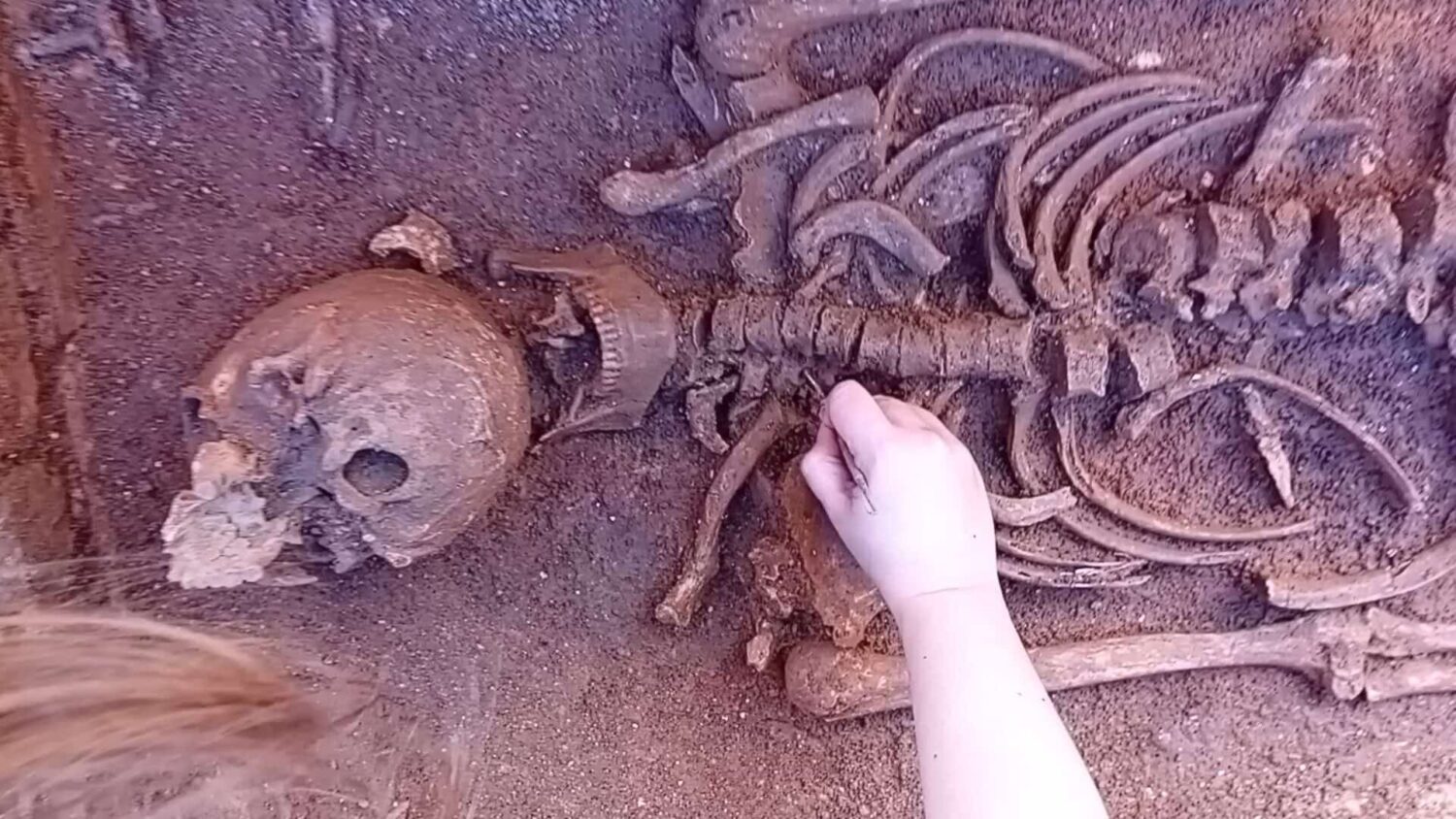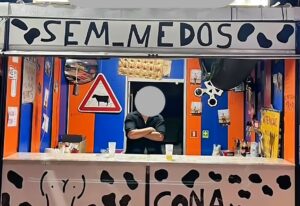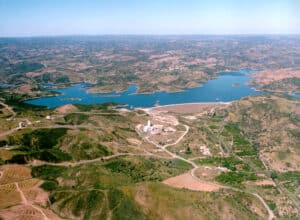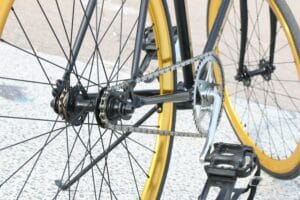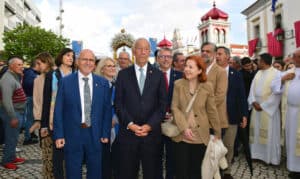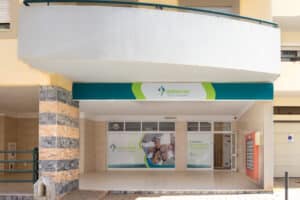Discoveries believed to date back to 5th or 6th century
An archaeological dig in Faro has unearthed three tombs from the ancient Roman city of Ossónoba.
The remains of a man, woman and a child, along with old Roman structures, were found by a team of archaeologists from ERA Arqueologia, which is carrying out digs across a 5,000sqm area where a future real estate development will be built.
The discoveries were made at an old truck repair workshop and are believed to date back to the 5th or 6th centuries, the project’s head archaeologist Francisco Correia told Barlavento newspaper.
Anthropologist Cláudia Maio noted that the tombs appear to have been looted in the past to steal “small bracelets, necklaces and rings”. In fact, the tombs indicate that the people may have had “some economic status” as they were not simply placed in open graves but instead buried in carefully built graves.
While the team cannot say for sure that the three people found were family members, the proximity of their graves seems to suggest as much. “But we cannot say anything for sure,” the anthropologist said.
The man’s remains seem to show he was older than the woman, who is believed to have been an older teenager or a young adult up to the age of 25, while the child, a baby, is not believed to have been older than six months.
For now, head archaeologist Francisco Correia is not ruling out the possibility of conducting DNA tests and isotopic analysis – used to determine population movements and dietary habits from chemical signatures in ancient human remains – to learn more.
This latest archaeological discovery did not come as a surprise to Francisco Correia, who had already led similar works which resulted in the discovery of a Roman game artefact believed to date back to the first century AD in 2020.
“We know that we are in an area with archaeological potential where there is a 17th century convent (of Santo António dos Capuchos) to the west, and to the east lies the area where the mosaic of the Ocean God (Deus Oceano), now a national treasure, was found,” he told Barlavento.
What did come as a surprise to archaeologists was the location of the tombs.
“Based on previous studies, this would have been an area that was possibly residential or more linked to industrial activities. There are many traces of salterns. Largo da Madalena would have been the entrance to the urban area of the city of Ossónoba. The identified graves are in the Figuras area, near Teatro Lethes, close to the Ermida de São Sebastião and the Pavilion of Escola D. Afonso III. This area is almost within the urban fabric,” the archaeologist explained, adding that this illustrates both the “growth and decline of Ossónoba.”
The graves of the man and the woman “were sealed with limestone slabs,” believed to be reused parts from “some of the most emblematic buildings that would have been here in the area,” he believes.
“The most monumental building nearby that we know of would be the possible house where the Ocean God mosaic was found,” discovered in the 1920s, reburied, and only rediscovered in 1976.
Correia also revealed that finding just three graves “is rare, but not unheard of. We always like to believe that a grave is never alone, but that’s not always true. Sometimes there is the isolated burial of an individual,” he said.
During the excavations, the team also unearthed hundreds of objects from daily Roman life, such as common ceramic fragments, kitchenware, amphoras, a bone dice, nails, pins, a spoon, jars, and many pieces of decorated pottery known as sigillata, mostly from the South Gaulish and Hispanic regions, a high-quality ceramic associated with the elite.
“Many depict animals and mythology, including one showing the goddess Victoria,” said Francisco Correia.

Among the coins found, one stands out, minted during the reign of Emperor Constantine I the Great (307-337). The team also found “animal bones used for making hairpins”.
In a southern area of the site, a Roman structure was found where archaeologists excavated remnants that might have been related to metallurgical production, notably a large concentration of crushed shells, a material from which pigment for textile dyeing was extracted. “The absence of a tank prevents us from confirming it was a dye factory. However, other recent archaeological interventions nearby suggest the possible existence of a textile dyeing building. These findings support that theory,” said Francisco Correia, adding: “we even found a pink pigment attached to a piece of clay.”
Currently, the ERA Arqueologia team has finished the third phase of excavations and is processing the collected materials. This allows the project developer to proceed to the next phase since the licensing request to the Faro Municipal Council hasn’t been submitted yet. The project developer’s representative, Joaquim Ferreira, highlighted the importance of conducting archaeological work before submitting the project to the municipality, as it helps the developer understand what exists at the site before moving forward with plans. He even suggests that this approach should “become the standard” procedure in Portugal, as it ensures thorough identification of archaeological findings before works commence, he said.

Original article by BRUNO FILIPE PIRES from Barlavento newspaper.

